A Deba knife is a traditional Japanese filleting fish knife favored by sushi chefs and other professionals for cleaning and butchering fish.
In fact, the Deba is purpose-built for filleting fish: its heavy, stout blade and single-bevel edge make it ideal for cutting through fish heads, bones, and fillets with precision. (It can even handle certain meat butchery tasks as needed.)
In this article, we’ll introduce some of the best Japanese Deba knives recommended for professional use – including smaller ko-deba – in a ranked format.
Every knife on this list is a top-notch tool that could last a lifetime with proper care. The “ranking” is just a guide, as each knife excels in its own way.
We’ll start by looking at how pros choose a Deba knife (for example, matching blade length to the fish you’ll be filleting), and then we’ll dive into our top picks with detailed explanations.
How Professionals Choose a Deba Knife (Key Points & Blade Length Guide)
First, let’s go over the key points a professional considers when selecting a Deba knife.
Deba knives are mainly used for breaking down whole fish, so they have a characteristic weight and shape optimized for that task.
It’s important to consider factors like steel type, blade length, and maintenance when choosing one to suit your needs and preferences. Here are the main criteria and what to look for in each:
| Feature | Typical Range / Options | Key Points & Tips for Choosing |
|---|---|---|
| Blade Material | • Carbon steel (Blue #2, White #2) • Stainless steel • Composite/laminated (hard‑core + soft cladding) | Carbon: superb sharpness & edge feel but rust‑prone—needs diligent care. Stainless: user‑friendly, highly rust‑resistant, a touch behind carbon in ultimate keenness. Composite: aims to blend carbon‑like hardness with added toughness from cladding. |
| Blade Length | ≈ 150 – 210 mm (6 – 8 in.) common Short versions: ~120–150 mm | Match length to fish size & workspace. Longer (e.g., 210 mm) gives leverage on big bones but needs more skill. Shorter is nimbler for small fish or tight prep areas. |
| Blade Thickness | Very stout spine & heel; noticeably thicker than most kitchen knives | Extra heft delivers power and stability for cutting through fish bones. Should feel “solid” but not unwieldy in your hand. |
| Blade Tip Shape | Broad profile with pointed, slightly downward‑angled tip | A finely ground tip excels at rib‑bone removal and bloodline scraping. Check curvature—subtle differences affect cutting feel. |
| Bevel / Sharpening Angle | Traditional single bevel (right‑hand) with concave back Edge angle: acute for razor cuts, wider for durability | Pros tailor the angle on finishing stones. Acute = cleaner cuts; slightly wider = chip resistance. Factory edges are good but benefit from personal tuning. |
| Handle Material | Ho (magnolia), walnut, ebony, mahogany, pakkawood, resin—usually octagonal or D‑shape with horn/plastic ferrule | Choose a grip that stays secure when wet. Octagonal/D‑shape wa‑handles give control and reduce fatigue during long prep. |
| Overall Weight | Heavier than western chef knives due to thick blade | Mass helps momentum through fish heads & bones but can tire the wrist over extended sessions—pick a weight you can manage for hours. |
| Balance | Often blade‑forward; some makers offer more neutral/handle bias | Blade‑heavy eases bone work; handle‑balanced feels more agile. Select the balance that aligns with your cutting style and comfort. |
| Brand / Forge Origin | Sakai (Osaka), Seki (Gifu), Tsubame‑Sanjo (Niigata), etc. | Reputable regions/workshops ensure consistent heat‑treat & finish. Sakai pieces, for example, are famed for refined sharpening. Good brands also provide after‑sales sharpening/repair support. |
| Maintenance Needs | High for carbon steel, moderate for stainless | Carbon blades demand wipe‑dry & oil after each use; reward is top‑tier edge. Stainless eases rust worries but still needs routine honing/sharpening. Harder steels hold an edge longer but resharpen slowly; softer steels sharpen quickly but need it more often. |
One more thing to consider is matching the Deba’s size to the fish you work with. Below is a general guideline for appropriate blade lengths for different fish sizes. If you frequently handle a certain size/type of fish, you’ll want a Deba in the corresponding range of blade length:

If you process a wide variety of fish sizes, you may even end up owning multiple Deba knives of different lengths – a shorter one for small prep and a long one for big jobs.
For carbon steel blades, you’ll often hear about “Aogami” (blue paper steel) vs “Shirogami” (white paper steel). These are high-end carbon steels from Hitachi Metals (Yasugi steel), with Blue #2 and White #2 being commonly used in Deba.
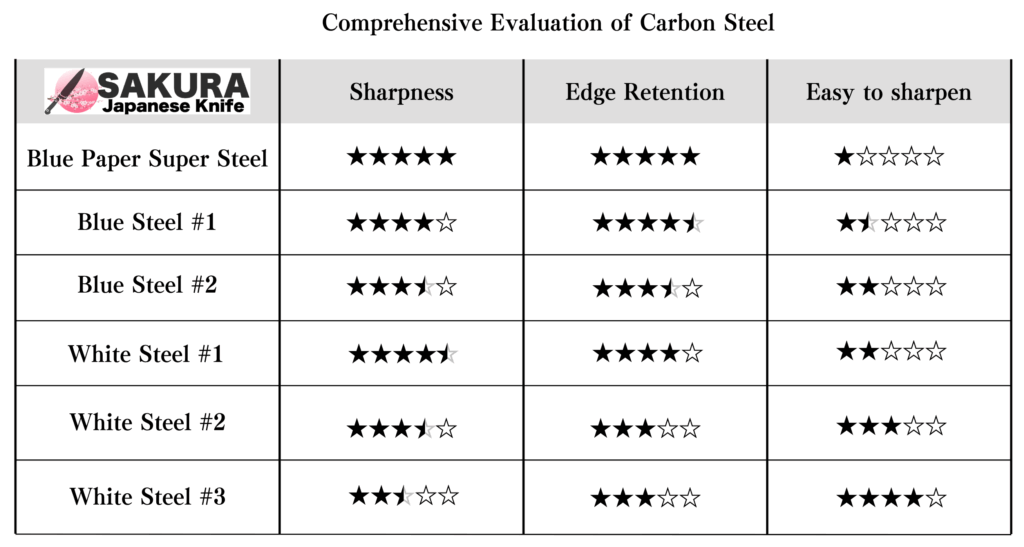
To put it simply, White steel (#1/#2/#3) is a very pure high-carbon steel known for extreme sharpness and ease of sharpening, while Blue steel (#1/#2/Super) has added alloy elements (like chromium, tungsten) to improve wear resistance and edge retention (at the cost of a bit more sharpening effort).
White #2 is often considered the most well-balanced of the Shirogami family for its mix of sharpness, toughness, and ease of use. It isn’t as hard as White #1 (less brittle) and not as soft as White #3 (better edge holding). Many professionals love White #2 for its balanced performance in sharpness, edge retention, and sharpenability – it’s often said to be the most “all-round” carbon steel for kitchen knives.
Even the best steel won’t perform if not properly sharpened. Many top makers will perform a professional-grade initial sharpening (“honba-zuke”) on the knife before it gets to you. (Honba-zuke is the final edge put on a traditionally made knife, usually by an expert sharpener using fine stones, to bring out the ideal sharpness.) This means when you receive the knife, it’s ready to go at peak performance. Over time, you can maintain that edge by sharpening at the appropriate angle.
Now that we’ve covered what to look for in a Deba, let’s get into our recommended knives! Below we present a ranking of the best Deba knives for professional use, with a mix of different steels and styles. For each knife, we’ve summarized the main features and provided some insight from professional chefs who have used them.
Best Deba Knife Ranking (Top Picks for Pros)
1. Sakai Takayuki Blue #2 Mirror-Finish Deba (Aogami #2 Steel)

| Aspect & 5‑Point Rating | Notes & Key Points |
|---|---|
| Sharpness ★★★★☆ | Blue #2 (Aogami #2) steel hones to an ultra‑keen edge rivaling expensive honyaki blades. A light touch starts a cut; slices sashimi with virtually no resistance. |
| Edge Retention ★★★★★ | Chromium + tungsten in Blue #2 give outstanding wear resistance. Stays sharp through heavy prep; “one good sharpening session keeps it going for a long time.” Noticeably longer‑lasting than White steel. |
| Rust Resistance ★★☆☆☆ | High‑carbon blade will rust if left wet or salty. Mirror polish helps a bit, but prompt wash/dry and occasional oiling are mandatory. Far from stainless. |
| Maintenance ★★★☆☆ | Hardness means sharpening takes more effort, yet needed less often. Factory honba‑zuke edge is excellent; Blue #2 tolerates repeated re‑sharpening while still taking a razor edge. |
| Aesthetics ★★★★★ | Mirror‑polished blade, octagonal ho‑wood handle, dark buffalo‑horn ferrule—classic, refined, “functional art” that impresses guests and chefs alike. |
| Price (JPY) | 120 mm ≈ $489 / 135 mm ≈ $517 / 150 mm ≈ $557 / 165 mm ≈ $588 / 180 mm ≈ $663 (popular size) / 195 mm ≈ $797 / 210 mm ≈ $916 / 225 mm ≈ $1,109 / 240 mm ≈ $1,301 |
Sakai Takayuki is a well-known brand from Sakai City in Osaka, Japan’s historically renowned knife-making center. It’s produced by the Aoki Knife Manufacturing Co., which has been making blades and swords for generations.
Sakai was famous for swords centuries ago, and by the Edo period it became famous for crafting knives, especially for cutting tobacco. Those artisans eventually transitioned into kitchen knives post-Meiji era, carrying on ~600 years of blade-forging tradition to modern times!
In Sakai’s knife-making system, tasks are divided between specialized craftspeople – there are master forgers and master sharpeners, each focusing on their art. Sakai Takayuki knives benefit from this, being hand-finished by skilled craftsmen to a very high quality.
This Blue #2 Mirror Deba uses Yasugi Aogami #2 high-carbon steel (often called “Blue Paper No.2”) as the core. It comes in a range of blade lengths from 120 mm up to 240 mm; the 180 mm size, which many pros favor, has an overall length around 334 mm and weight about 346g.
The blade is single-beveled for right-handed use, and the front side is polished to a mirror finish by experts. The handle is crafted from ho wood in an octagonal shape with a buffalo horn ferrule, offering a nice blend of traditional looks and practical durability.
One advantage of the mirror finish (aside from looking gorgeous) is that it’s easier to keep clean – blood or bits of fish flesh don’t cling as much, and it’s somewhat more rust-resistant than a matte finish because there are fewer micro-scratches for moisture to hide.
This makes it perfect for professional fish work like filleting and breaking down bones, and it’s loved by sushi chefs and Japanese cuisine chefs who often use their Deba for long time.
Chef’s perspective:
“I used to work at Tsukiji (now Toyosu) market and now handle fish prep at a local ryotei. I often have to fillet 50+ fish in a single day, from early morning through late night. The Sakai Takayuki Aogami #2 Mirror Deba has been amazing – even with continuous heavy use, the edge barely seems to dull. For example, I might process a load of fresh fish in the morning, then more for the evening service, and I’ve found I only need a quick touch-up on a finishing stone occasional . Compared to White steel knives, I definitely sharpen less frequently, which is a lifesaver on busy days.”
“Now, it is a bit heavy – I’ve had newer staff mention ‘whoa, it’s a little heavy…’ when they first pick it up. But that’s typical for a Deba. In fact, the weight is what allows the knife to do the work when cutting bones, so you don’t have to push as hard and your hand doesn’t tire out as quickly. It might take a little getting used to for some, but once you’re accustomed, the balance and heft actually feel incredibly comfortab .”
“Since buying the 180mm Sakai Takayuki Mirror Deba, it has honestly changed how I approach fish. First off, the look – ‘absolutely beautiful’ was my impression picking it up. That mirror polish isn’t just for show; it also makes it super easy to rinse off fish scales and blood, which I appreciate. On the first day, I filleted a variety: seabass, snapper, tuna, even small kohada (gizzard shad). No matter what I cut, the knife slid through effortlessly. The sharpness is as rumored – just a light touch and it sails from skin through flesh, and you can cut right along the bone with precision.
“Of course, being Aogami #2, I do have to mind rust a bit – I make sure to clean and dry it promptly. But thanks to the mirror finish, it’s actually quick to clean up, so I end up taking better care of it in a shorter time, which is a nice bonus. It motivates me to handle it carefully because it’s such a gorgeous tool. In short, this knife has truly become a treasured part of my kit.”
2. Sakai Jikko White #2 Deba (Shirogami #2 Steel)
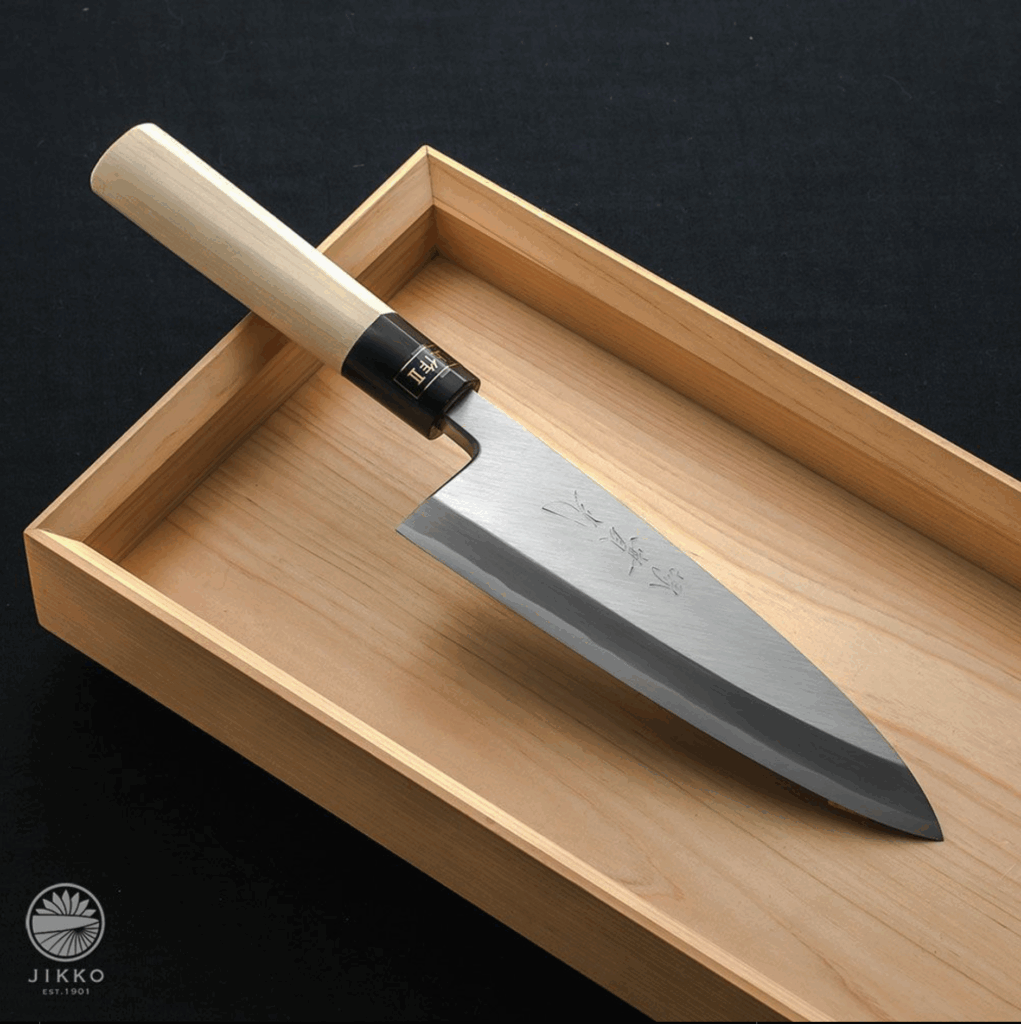
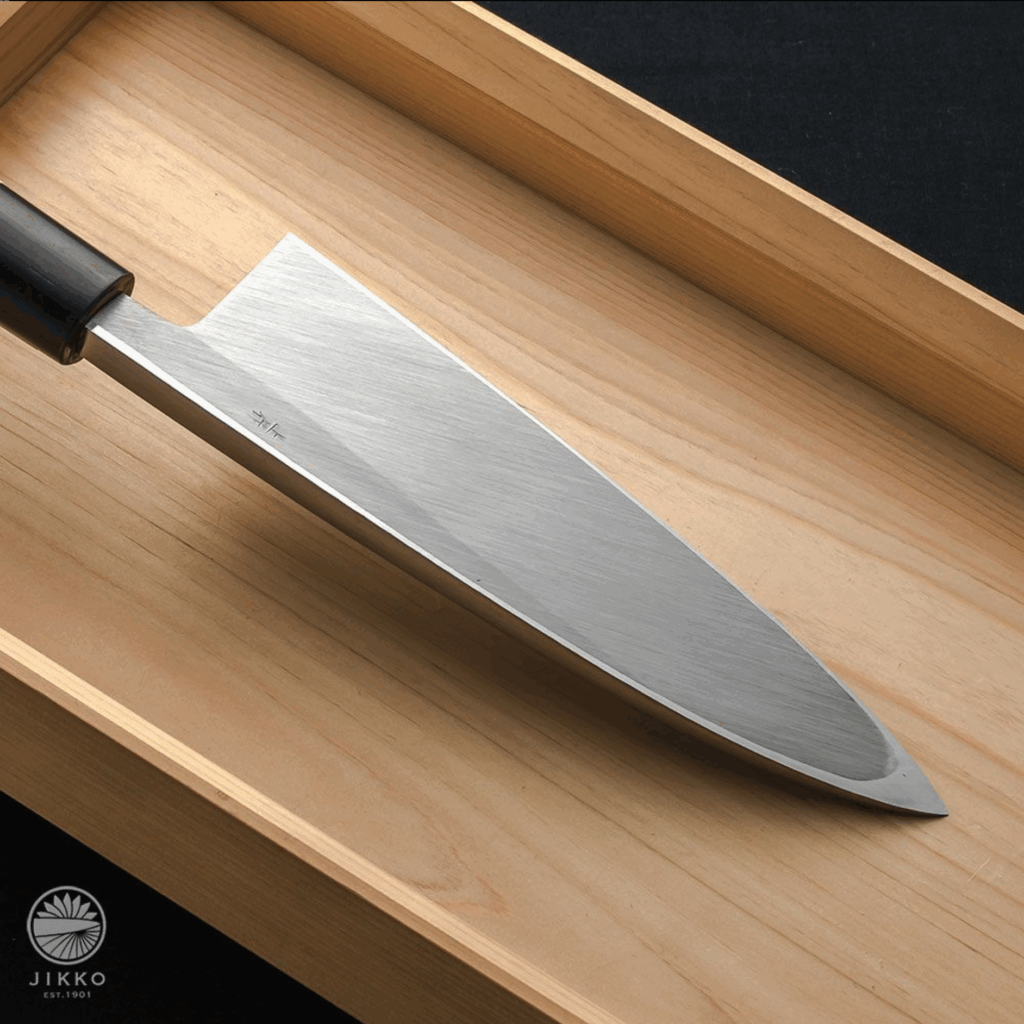
| Aspect & 5‑Point Rating | Notes & Key Points |
|---|---|
| Sharpness ★★★★☆ | Yasuki White #2 steel takes a scalpel‑like edge with minimal effort. Factory honba‑zuke puts it razor‑sharp out of the box; cleanly bites through tough fish skin, cartilage, and bony ridges without crushing. Exemplifies White #2’s signature pure cutting performance. |
| Edge Retention ★★★☆☆ | White #2 favors peak sharpness over longevity, so the edge dulls sooner than Blue steel in heavy pro use. Still, it’s easily revived—“any lost sharpness is quickly restored on the stone.” Blade life is decades‑long thanks to endless resharpening potential. |
| Rust Resistance ★☆☆☆☆ | High‑carbon, non‑stainless blade rusts fast if left wet or salty. Must be dried and oiled after use. Patina offers slight protection, but objective corrosion resistance is low—care is mandatory. |
| Maintenance ★★★★☆ | One of the easiest steels to sharpen; quick whetstone touch‑ups bring it back to scalpel sharp. Pros often enjoy the routine. High score only docked for the need to sharpen more frequently (though each session is fast and effective). |
| Aesthetics ★★★★★ | Classic kasumi finish: matte cladding contrasts with shiny edge, paired with plain Magnolia (ho) handle and buffalo‑horn ferrule. Timeless, understated wa‑bocho look—rustic yet elegant; full marks for capturing traditional beauty. |
| Price (USD) | 195 mm ≈ $444. Other sizes range roughly from ko‑deba 105 mm up to 300 mm, with prices rising accordingly. |
Sakai Jikko (written as 實光刃物) is a long-established knife maker based in Sakai, Osaka. They produce a wide range of knives from traditional Japanese styles to Western styles. Jikko is known for craftsmanship that blends traditional forging and sharpening techniques with a dedication to quality, resulting in knives prized for their sharpness and durability. They also offer extensive sharpening and repair services, meaning their knives can truly be “knives for life” if cared for – a hallmark of a top-tier manufacturer.
The White #2 steel used here (Shirogami #2) might not have the highest hardness compared to steels like Shirogami #1 or Aogami Super, but it is plenty hard by professional standards and actually tougher (less brittle) than the ultra-hard ones. In practice, it has all the hardness a pro needs for daily work while being easier to use and maintain.
One of White #2’s biggest strengths is its balance. In the world of carbon steels, many consider White #2 as the baseline because it is so well-rounded. It’s a high-purity carbon steel with few impurities and a relatively high carbon content.
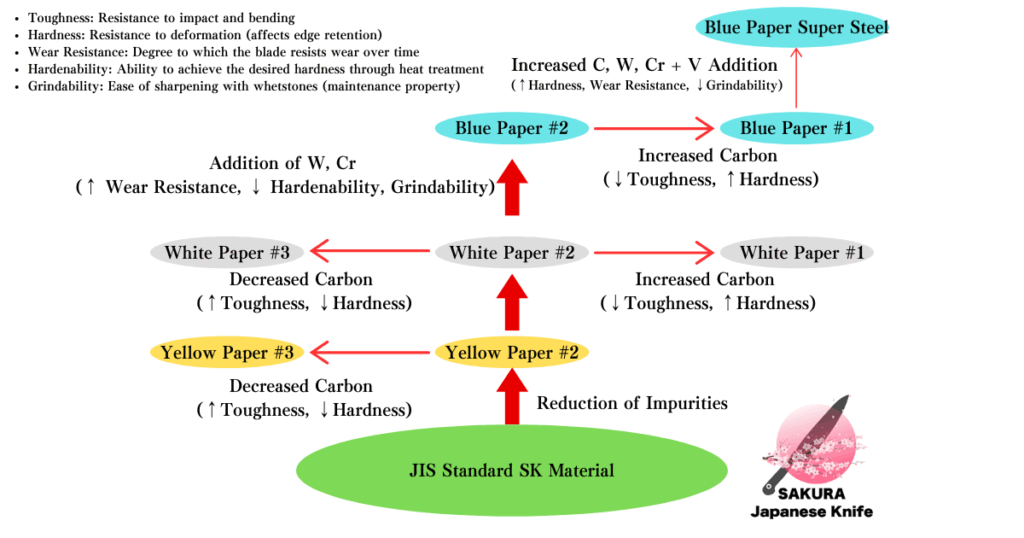
It emphasizes sharpness and ease of sharpening, allowing you to touch up the blade quickly and maintain peak performance.It’s not as hard as White #1 (which can be chippy) and not as soft as White #3 (which would dull faster), so it achieves a great middle ground in sharpness vs. toughness.
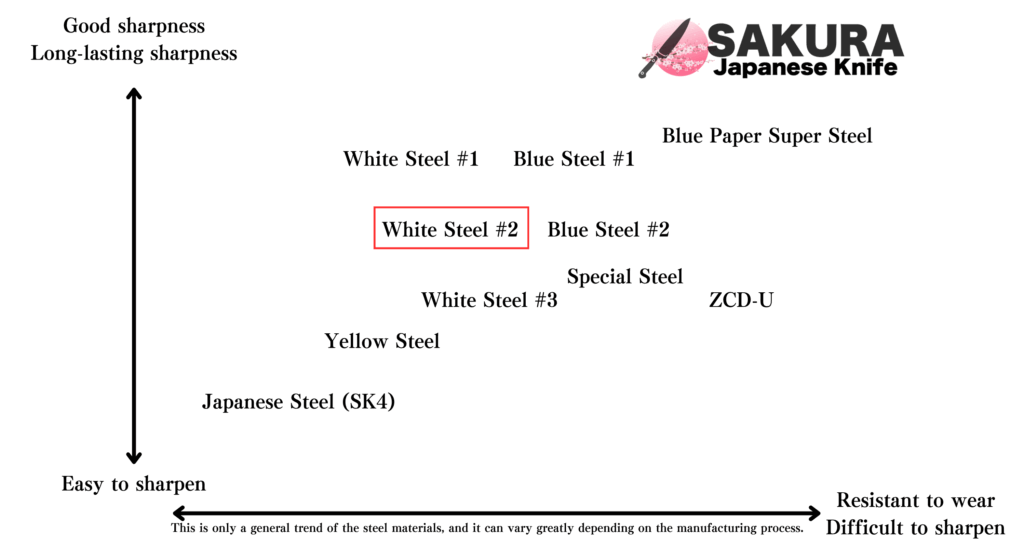
Because of this, among professional chefs, White #2 is often loved as one of the most balanced and user-friendly steels – it gives you sharpness, decent edge life, and easy honing.
It’s worth noting that even with the same steel, how the edge is finished matters. Jikko offers an optional service to put a high-grade final edge (“honba-zuke”) on their knives (sometimes for an extra fee), which many pros take advantage of. This means your Deba can arrive with a perfectly tuned edge ready for work. The combination of a great steel and expert sharpening means this knife is absolutely up to professional demands from day one.
Overall, this White #2 Deba by Jikko is arguably a “if you’re not sure which Deba to get, you can’t go wrong with this” kind of knife. It’s made by a venerable maker using a beloved steel, crafted with skill and balanced in performance. It comes in a wide variety of lengths too, so you can pick exactly the size you need for the fish you handle (anything from 105 mm small deba to a massive 300 mm!) – that flexibility is a nice plus.
| Blade Length (mm) | Price (USD)* |
|---|---|
| 105 mm | $245 |
| 120 mm | $268 |
| 135 mm | $281 |
| 150 mm | $326 |
| 165 mm | $347 |
| 180 mm | $389 |
| 195 mm | $444 |
| 210 mm | $519 |
| 225 mm | $616 |
| 240 mm | $732 |
| 270 mm | $1,075 |
| 300 mm | $1,548 |
Chef’s perspective:
“I’ve been behind the sushi counter for 30 years, and this Jikko White #2 Deba still amazes me every time I fillet a fish. When I’m filleting flounder or sea bream for nigiri, even through thick fillets, the blade slips right in as if by magic. The balance of the blade’s weight and thickness is just perfect – I can split large fish bones cleanly without much force. After use, I always carefully dry it off; frankly, I don’t mind that extra step because this knife is such a trusty partner. It’s also easy to sharpen, so I’ve come to enjoy my morning routine of dressing the edge on a stone. This knife feels like the very essence of a traditional wa-bocho, truly a blade with the soul of the craftsman in it.”
“In a busy washoku restaurant, where filleting fish is a constant task, a reliable Deba is indispensable. The model from Jikko (sometimes they write it as SIRONI in catalogs, but it’s Jikko’s White #2) has an easy-to-grip handle and just the right heft to boost efficiency. Sure, White #2 steel means you have to watch out for rust, but in return the sharpened edge is incredibly keen and, with maintenance, holds up well. It cuts through fine bones cleanly, which means I can present beautifully filleted fish. It’s a piece I’d highly recommend to anyone who wants to make sure their fish prep is top-notch.”
In summary, Sakai Jikko’s White #2 Deba is a knife you can confidently pick if you want top-tier sharpness with traditional vibes.
It merges the razor edge and easy handling of White steel with Sakai’s expert sharpening and fit-and-finish. It has a perfectly balanced weight distribution that feels stable in use (the blade doesn’t wobble or steer off course when cutting).
There are no gaudy decorations on it, but that just highlights its dignity as a serious tool. As you use and sharpen it day in and day out, it will mold to your hand and become “your knife” – the kind of lifelong companion that many chefs treasure.
3. Yoshihiro (Yoshihiro Gouwamonjo) Blue #2 Kasumi Deba (Aogami #2 Steel, Magnolia Octagon Handle)
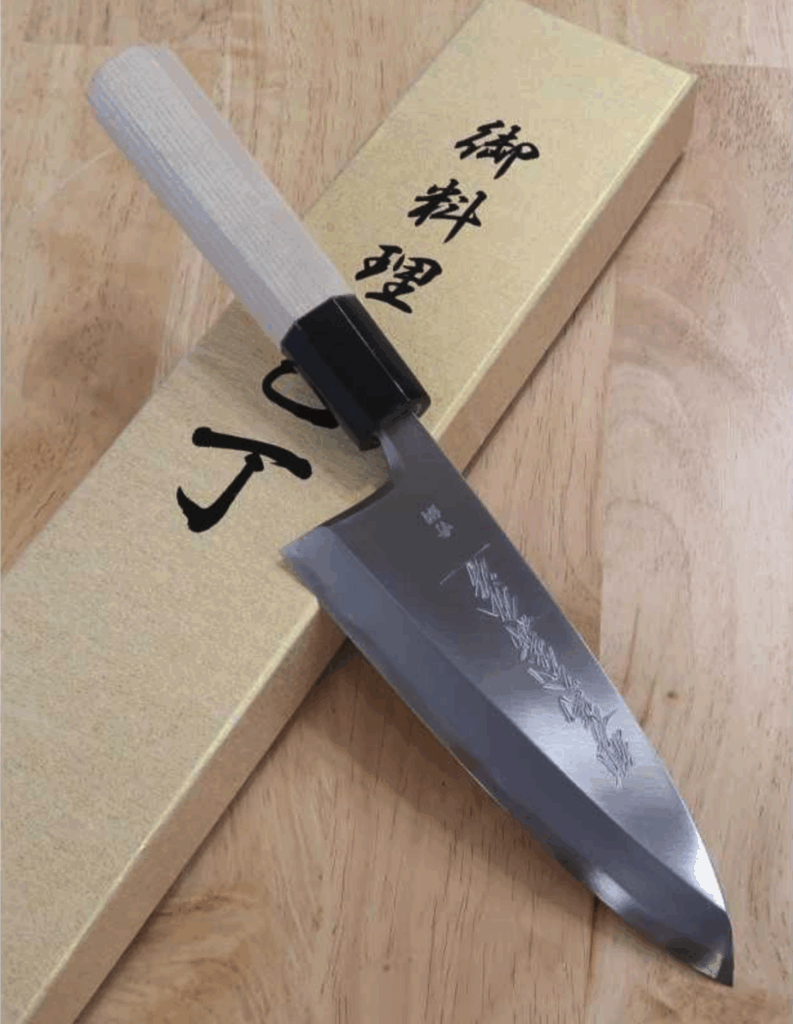
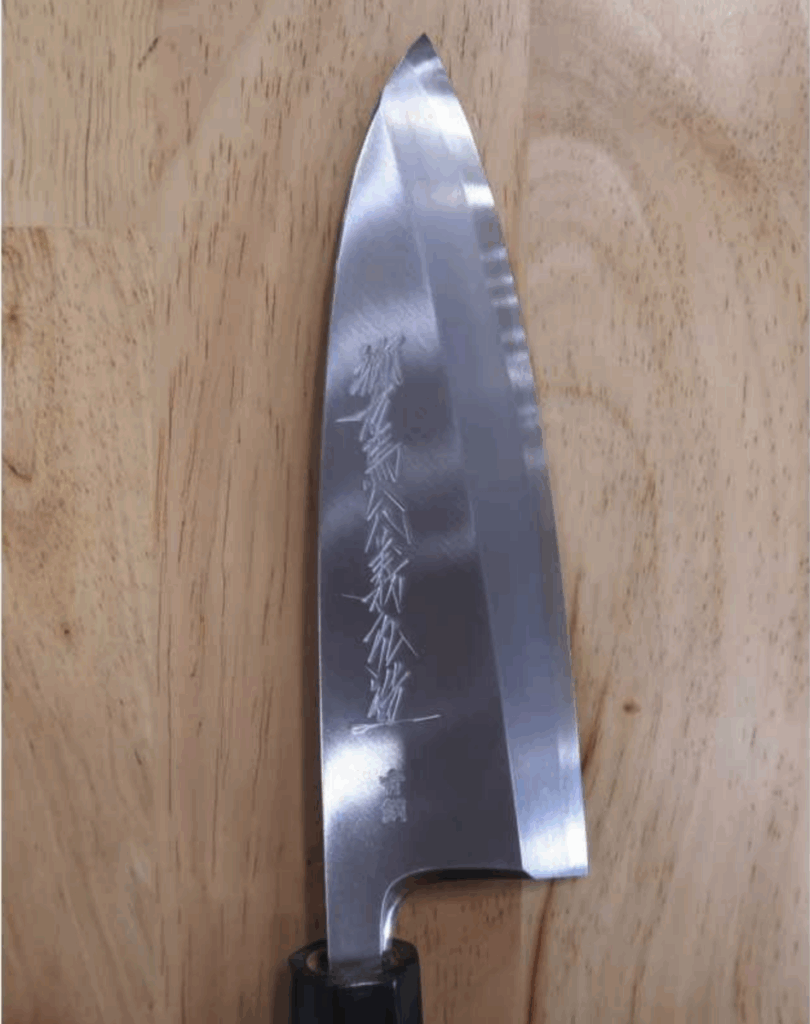
| Aspect & 5‑Point Rating | Notes & Key Points |
|---|---|
| Sharpness ★★★★★ | Forged from expertly heat‑treated Aogami #2, this Deba glides through tough fish skin and bones with almost zero friction. Arrives razor‑sharp (factory honba‑zuke), giving a silky yet powerful cut that produces pristine sashimi slices. |
| Edge Retention ★★★★☆ | Blue #2 balances bite and durability—fillet multiple large fish without the edge fading. Pros report morning‑to‑night sharpness with no lunchtime touch‑up. Resists chipping and wears slowly, so the blade lasts for many years of sharpening. |
| Rust Resistance ★☆☆☆☆ | Still high‑carbon: will rust fast if left damp. Wipe dry immediately and oil for storage. A natural patina offers minor protection, but daily vigilance is required—performance prioritized over corrosion resistance. |
| Maintenance ★★★★☆ | Needs sharpening less often thanks to strong edge holding. When required, Blue #2 sharpens more easily than most stainless yet takes longer than White #2—smooth, predictable feel on the stone. Less total sharpening time over the knife’s life. |
| Aesthetics ★★★★★ | “Ao‑kasumi” haze on the blade road creates a shimmering mist effect; polished jigane, octagonal Magnolia handle, and buffalo horn ferrule scream refined craftsmanship. Spine/choil are smoothly finished—an understated showpiece. |
| Price (USD) | 150 mm ≈ $364 165 mm ≈ $426 180 mm ≈ $479 |
This Deba is sold under the Yoshihiro brand, which in Japanese is marked as “郷右馬允義弘” (Gōuma-no-jō Yoshihiro). Interesting bit of trivia: that name comes from a famous swordsmith of the Kamakura period.
The Yoshihiro brand today carries on traditional sword-forging techniques merged with modern methods to create high-quality kitchen knives.
It’s produced by Yamawaki Cutlery Co., an Osaka-based company from Sakai City with a long history in knife making. Yoshihiro is highly regarded both in Japan and internationally, as it balances tradition and innovation – using modern steel treatments on classic designs, for instance.
The steel here, Aogami #2, is essentially White #2 with a bit of chromium and tungsten added. This boosts its wear resistance and edge retention. Typically it achieves around 62 HRC hardness in this knife – which means it’s quite hard (so it wears slowly) but not so hard that it’s brittle.
It retains sharpness longer than White #2, though you pay by having to spend a little more time when you do sharpen it. It also has great cutting power – it can take a very fine edge, and because of its toughness, it’s stable even against bone and hard cuts (less chipping).
Yoshihiro’s heat treatment really maximizes Blue #2’s potential. They’ve managed to create a knife that is praised for “combining exceptional long-lasting sharpness with stability (resistance to chipping)”. In practical terms, you get a blade that stays sharp a long time but is also resilient under heavy use – a perfect combo for a Deba. They offer this series in three sizes (150, 165, 180mm) to suit different needs.
Chef’s perspective:
“I handle the fish station at a long-established kappo restaurant, and I feel this Yoshihiro Blue #2 Deba is truly a knife made with pros in mind. The first thing I noticed was the beautiful finish – the mirror-like sheen on the blade with that kasumi pattern had me mesmerized. And the sharpness is just amazing: it slices through something like the center bone of a kanpachi (amberjack) without me having to muscle it – the weight and edge do the work. Compared to my White steel knife, the edge on this one definitely lasts longer; even after breaking down dozens of fish in an evening, it didn’t feel dull. I found I saved time on sharpening, yet whenever I do put it to the stone, it sharpens up beautifully with little fuss, which shows the skill of the Sakai craftsmen. Because it looks so good and cuts so smoothly, I feel an extra sense of pride plating up sashimi for customers with this knife in hand.”
“In washoku kitchens we fillet fish constantly, so we need a Deba that’s both sharp and easy to handle. This Yoshihiro has nailed the balance of a substantial weight with a razor edge – it’s just right. Even hitting hard bones, it hardly ever chips and just powers through, which is fantastic. The handle is comfortable, so even if I’m prepping fish for hours, I don’t get overly fatigued. It’s really stable during cutting too – it doesn’t twist or slip, it just drives straight through what I aim it at. I feel I can trust this knife completely when I want to make sure my fish is beautifully prepared.”
The Yoshihiro Blue #2 “Ao-Kasumi” Deba is a series that’s earned deep trust from professional chefs. Why? Because it delivers a level of all-round performance that pushes the envelope of what we expect from a traditional wa-bocho.
It has razor sharp cutting ability (no surprise), but also toughness to withstand hitting hard materials without chipping, and the ability to maintain that surgically sharp edge for a long time.
On top of that, it’s gorgeous – the smooth cut surface it leaves on ingredients even elevates the presentation of the food.
The handle and weight are well-calculated for comfort, allowing long use with minimal fatigue. It’s like a fusion of tradition and modern refinement: a knife that’s wonderful to use and to behold, truly sparking joy in ownership.
4. Sakai Takayuki “Chef Series” Ginsan Deba (Stainless Ginsan #3 Steel)

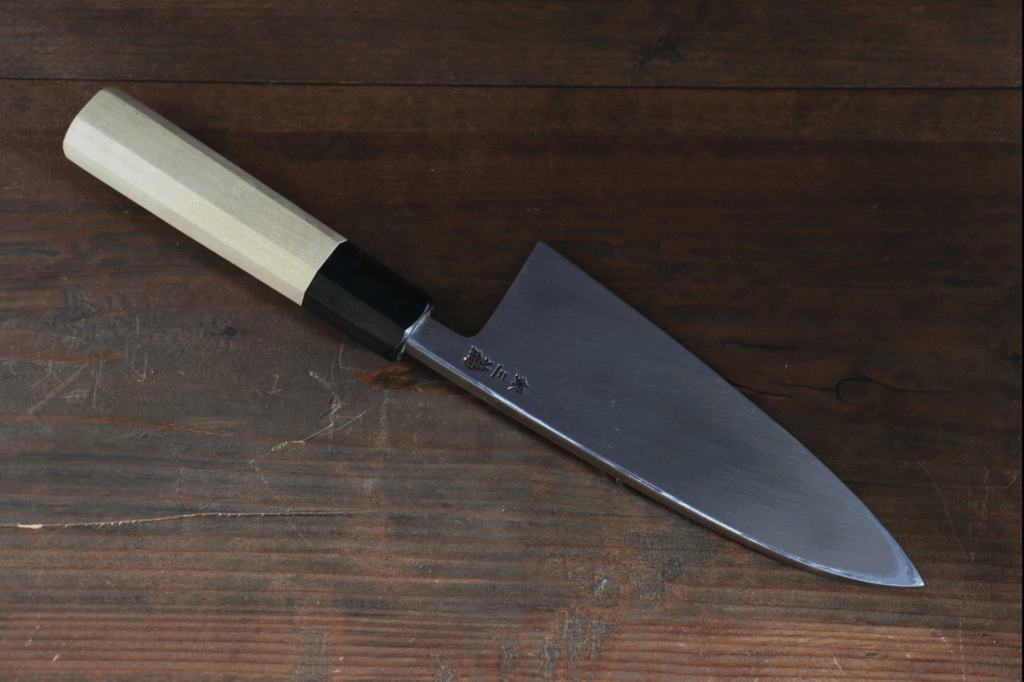
| Aspect & 5‑Point Rating | Notes & Key Points |
|---|---|
| Sharpness ★★★★☆ | Ginsan (Hitachi Silver #3) stainless achieves carbon‑steel‑like keenness. Factory honba‑zuke edge arrives razor sharp; glides through fish flesh and skin without tearing, giving clean fillet cross‑sections nearly indistinguishable from White‑steel cuts. |
| Edge Retention ★★★☆☆ | Holds an edge well, though a shade below Blue #2. In home use can go weeks without resharpening; in pro kitchens the bite fades gradually after heavy shifts but is easily revived. Solid, dependable edge life—strong 3/5. |
| Rust Resistance ★★★★☆ | High‑chromium stainless greatly reduces corrosion worries. Handles salty, wet tasks with minimal risk; forgiving if you forget to dry it immediately. Docked one star only because no steel is truly rust‑proof. |
| Maintenance ★★★★☆ | HRC ≈ 60 and carbon‑like feedback make sharpening quick and pleasant—no special stones needed. Daily touch‑ups are brief; cleaning is easy thanks to stainless nature. Excellent all‑round user friendliness. |
| Aesthetics ★★★☆☆ | Kasumi‑style two‑tone blade (mirror near edge, misty upper), octagonal handle with buffalo horn ferrule. Clean, professional look—understated rather than flashy; workmanship is solid and refined. |
| Price (USD) | 105 mm ≈ $408 120 mm ≈ $444 135 mm ≈ $480 150 mm ≈ $516 165 mm ≈ $564 180 mm ≈ $660 195 mm ≈ $744 210 mm ≈ $828 225 mm ≈ $972 240 mm ≈ $1,080 |
Sakai Takayuki, as mentioned earlier, is a famed Sakai brand blending centuries of tradition with modern needs.
They’ve built a wide lineup of both Japanese and Western knives, always focusing on selecting the right steel and crafting comfortable handles for each.
The Chef Series Ginsan Deba is a great example of their innovative approach: taking Ginsan-ko (Silver #3 steel) – a stainless steel developed by Hitachi Metals as part of their Yasugi lineup (the same family as Blue and White steels, but made to be stainless) – and applying it to a traditionally single-bevel Deba.
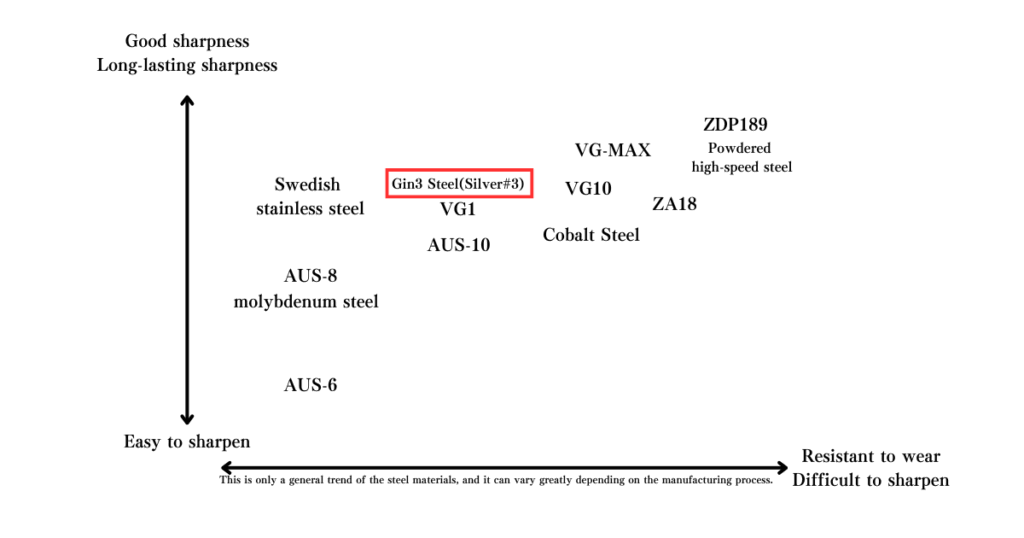
Ginsan is basically a stainless cutlery steel that was designed to mimic carbon steel’s edge qualities, and it has become a go-to for high-end sushi knives for those who want less upkeep.
To provide context: stainless steels are loved for being rust-free, but historically they lacked a bit in edge quality versus carbon. Ginsan changed that by offering a steel that’s rust-resistant yet sharp and holds an edge well, effectively the best balance among stainless options.
It might not quite reach the absolute sharpness of the purest carbon or the extreme durability of some powder steels, but it hits a sweet middle ground that’s become a standard choice for many knife lines.
Like the Jikko White #2 Deba, the Sakai Takayuki Ginsan Deba also comes in a wide range of blade lengths. This means whether you need a little 105mm ko-deba or a big 240mm hon-deba, you can get it in this rust-resistant version, which is fantastic for covering all needs. It really caters to everyone from home cooks (who might prefer a smaller one for ease) to pros (who might have a big one for large fish, or multiple sizes).
Chef’s perspective:
“As someone dedicated to washoku, the sharpness and maintainability of my knives are critical. After using the Sakai Takayuki Ginsan Deba, I realized just how much having both sharpness and low maintenance can improve my work efficiency and the quality of my output. The peace of mind of not worrying about rust is amazing – I can fillet a whole batch of fish (even fish we iced heavily) and if I get pulled away to another task, I don’t come back to find rust on my blade. But the real surprise was the sharpness: I honestly couldn’t believe a stainless knife could be this sharp. It went through fillets with zero drag, giving results on par with my White steel Deba. I only have to sharpen it a couple times a week at most, and it bites the stone nicely so resharpening is stress-free. I can even do a quick touch-up during busy prep and get right back to work. Thanks to this knife, my work flows more smoothly and my prep quality is steady. Truly a new generation of wa-bocho!”
“For chefs filleting lots of fish daily, stable sharpness and easy care are indispensable. The Sakai Takayuki Ginsan Deba, being made of stainless Ginsan steel, is wonderfully rust-resistant and easy to maintain. It has a good heft and thickness, allowing me to go from beheading fish to filleting them in one go smoothly. The edge lasts a long time, so I don’t have to sharpen as often, which speeds up prep. I really value it as a knife that improves our efficiency because it holds its sharpness and doesn’t demand constant care.”
The Sakai Takayuki Chef Series Ginsan Deba is basically a next-generation Japanese knife made to meet professional demands. It was developed to answer the common wish of chefs: “I want a super sharp wa-knife, but I wish it was less hassle to maintain.”
By using Ginsan steel, they achieved that. The biggest charm of this knife is indeed how it combines rust-free convenience with the cutting performance of a traditional carbon steel knife.
In a busy kitchen, not only do you need a knife that stays sharp, but you also benefit hugely from any time saved on upkeep. With this Deba, you can work quickly without worrying about wiping the blade every minute, and it stays wicked sharp throughout.
Each knife is also hand-finished by Sakai craftsmen, so you get an “out-of-the-box” edge that is truly impressive. They promoted it with the phrase “rust-resistant but hand-forged, so the sharpness is outstanding!” – and it really isn’t an exaggeration.
This knife is a game-changer that is reshaping the expectations for what a traditional Japanese Deba can be It lets you focus on your craft (filleting fish beautifully) without the usual maintenance worries, which is why it’s getting so much attention among savvy chefs.
5. Sakai Jikko “Shiko” SG2 Powder Steel Deba (180mm)

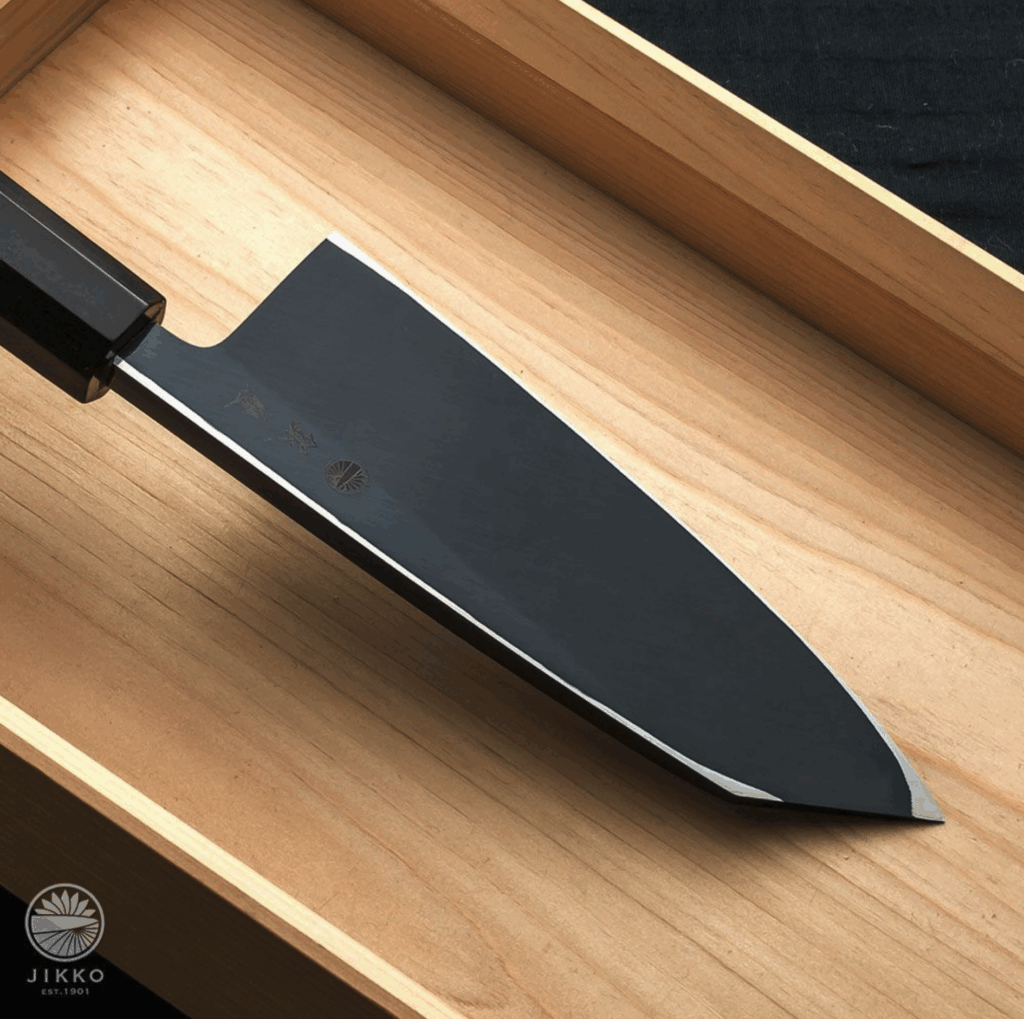
| Aspect & 5‑Point Rating | Notes & Key Points |
|---|---|
| Sharpness ★★★★★ | SG2 (powdered high‑speed steel, ~HRC 62‑64) takes an ultra‑acute edge that feels scalpel‑like straight out of the box. Fine grain gives a glass‑smooth cut—glides through fish flesh and cartilage with surgical precision and virtually no drag. |
| Edge Retention ★★★★★ | Extreme wear resistance keeps the edge keen for months of regular use; even under heavy pro prep the bite endures all day. Chipping is rare, and the blade thins so slowly that it promises years of service with minimal metal loss. |
| Rust Resistance ★★★★★ | SG2’s ~15 % chromium + molybdenum make it fully stainless. Highly resistant to moisture, acids, and salty environments—worry‑free care: wash, dry, and get back to work. |
| Maintenance ★★★☆☆ | Sharpening frequency is low thanks to stellar edge life. When sharpening is needed, the very hard steel takes more time and skill (especially to preserve the kasumi finish), but SG2’s fine grain still responds well to quality whetstones. |
| Aesthetics ★★★☆☆ | Understated elegance: near‑mirror jigane polish, flawless bevels, premium octagonal handle (ebony + buffalo horn). No flashy damascus pattern—beauty lies in precision craftsmanship rather than ornament. |
| Price (USD) | 180 mm ≈ $693 (converted from ¥69,300 × 1.5 ÷ 150). |
This Deba is part of Sakai Jikko’s “Shiko” series, which represents their highest grade of craftsmanship. It uses SG2 (Super Gold 2) as the core steel.
SG2 is made by Takefu Special Steel Co. using powder metallurgy. It’s known for an exceptional combination of high hardness, high toughness, high wear resistance, and high corrosion resistance – basically a “super steel” for kitchen knives
. As a result, it can achieve phenomenal sharpness and edge life, and is tough enough to stand up to hard fish bones without chipping. Sakai Jikko sends these Shiko knives out with a meticulous final sharpening, so you get pro-level performance from the first cut.
What’s impressive is that despite SG2’s modern nature, Jikko treats it in a very traditional way: they forge weld it with soft cladding and shape it into a classic single-bevel form. This gives you the best of both worlds – the cutting power of advanced steel in the format of an old-school Deba. So you benefit from the steel’s properties while using techniques and motions identical to any other Deba.
Chef’s perspective:
“I fillet a large volume of fish daily, and I’m amazed at how long this knife stays sharp. Even if I use it all day, the edge remains razor sharp, and it slices through thick fish heads cleanly. Because it’s also resistant to rust, I don’t have to baby it during service – I can use it without constantly wiping, which is a big help.”
“I tried this knife even on cutting through the hard bones of hamo (pike conger eel, which requires cutting through lots of fine bones), and it didn’t chip at all. I could apply force confidently. It’s my first time using a Deba with a powder steel, and when I sharpened it, the edge took on a mirror-like polish and the sharpness was just breathtaking. Maintenance is easy too, and I love that I can keep that beautiful edge for a long time.”
The Sakai Jikko Shiko SG2 Deba really stands as a pinnacle: it merges the traditional artistry of Sakai knife-making with cutting-edge steel technology.
It offers an extraordinary combination of attributes – literally top-of-class sharpness, longevity of edge, and rust resistance in one package. The build quality is impeccable, and while it may not be ornamented, it has a luxurious aura from the quality of materials and finish (ebony handle, polished blade, etc.).
It’s often said about this knife that while it’s a practical tool, it carries itself with the dignity of a piece of fine craft or art, which we agree with.
6. Sakai Takayuki “Uzushio” Damascus Deba 180mm (White #2 Core)
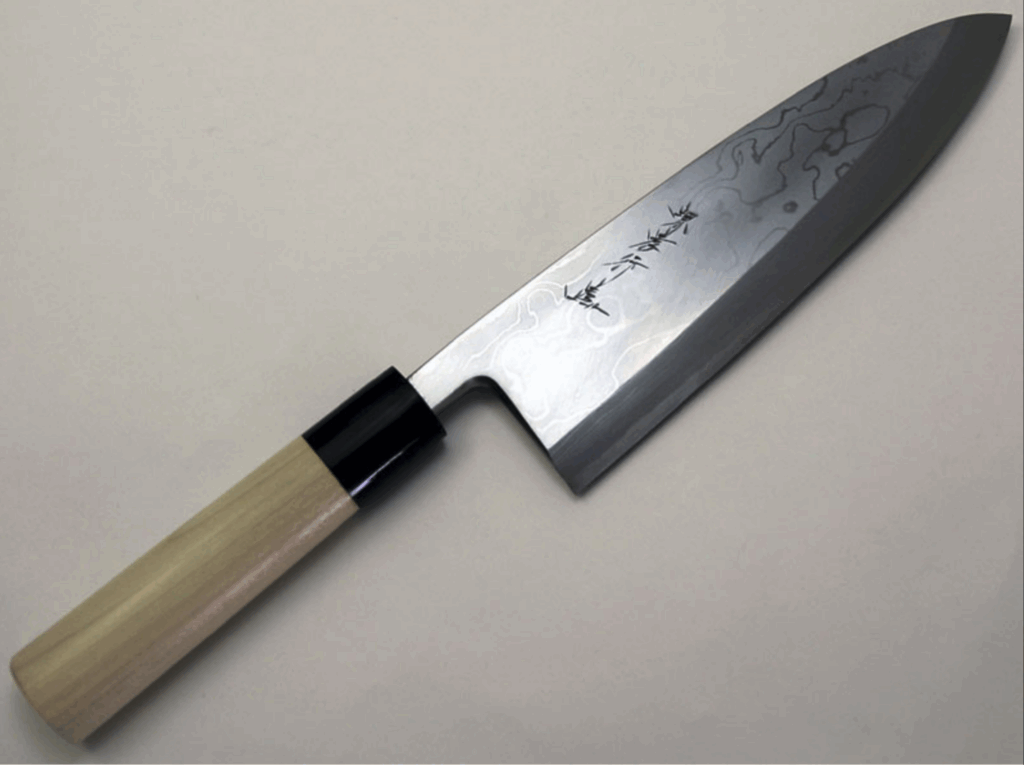

| Aspect & 5‑Point Rating | Notes & Key Points |
|---|---|
| Sharpness ★★★★☆ | Shirogami #2 core takes a razor‑keen edge (~HRC 62). Despite the Deba’s heft, it slices fish like a yanagiba—ultra‑smooth entry, clean fillets. Near‑top‑tier initial bite (only edged out by steels with even higher hardness or powder metallurgy). |
| Edge Retention ★★★☆☆ | White #2’s edge slowly softens with heavy use, yet lamination adds toughness and reduces micro‑chipping. Holds daily working sharpness but needs periodic touch‑ups to stay scalpel‑sharp. |
| Rust Resistance ★☆☆☆☆ | All‑carbon build (core + soft‑iron damascus cladding) rusts readily. Damascus layers can spot if neglected. Vigilant wipe‑dry/oil routine required—keep a towel handy! |
| Maintenance ★★☆☆☆ | Sharpening feel is friendly—White #2 loves the stone—but demands frequent light honing and careful technique to preserve the damascus finish. Daily rust prevention adds workload. |
| Aesthetics ★★★★★ | 16‑layer damascus wave pattern, near‑mirror flats, Magnolia handle, dark horn ferrule—stunning, one‑of‑a‑kind artistry that only grows more dramatic as it patinas. |
| Price (USD) | 180 mm ≈ $489 210 mm ≈ $731 |
The Sakai Takayuki “Uzushio” Damascus Deba uses a White #2 core with soft iron multi-layer cladding. “Uzushio” means whirlpool, likely a nod to the swirly damascus pattern.
The multi-layer construction isn’t just for looks – as mentioned, it gives the blade some added toughness. By sandwiching the hard core between softer layers, the blade becomes a bit more resilient (less likely to snap or chip big if mishandled slightly). It’s a common technique in traditional knives to improve durability and also to facilitate sharpening (soft sides wear away faster, exposing the hard core).
In practical terms, the laminated structure means this Deba can absorb shocks better than a monolithic carbon steel blade. When you cut through a bone, the soft iron layers help cushion the impact. As a result, the knife has a bit of forgiveness – you might notice slightly less chattering or bouncing when hitting hard fish bones compared to an all-steel knife.
Also, as the knife is used, the soft iron can form a patina (called “jisabi”) that actually protects it to some extent from further rust – essentially a stable oxide layer can form, making the blade a little more rust-resistant over time (though you still need to be careful).
All told, this knife combines the extreme sharpness of White steel with the strength and beauty of a damascus construction. It’s like a “best of both” for those who love traditional carbon steel but also want that artisanal damascus look.
Chef’s perspective:
“As a sushi chef, I sometimes fillet fish in front of customers, and whenever I use this damascus Deba, I invariably get comments like ‘Wow, that’s a beautiful knife.’ It’s not just looks though – the performance is top-notch. Even against the thick bones of a large hirame (flatfish), the blade doesn’t flinch, and I can slice right through. After filleting white fish, the cut surface is so smooth, which helps yield beautiful sashimi slices. I do handle it very carefully due to its rust prone nature, but honestly, with such sharpness and presence, this knife has become irreplaceable for me – it’s a treasure.”
“Every time I fillet fish on the board, I find myself admiring the damascus pattern on the blade. The visual flair is fantastic, but beyond that, the balance and weight in hand are perfect – it’s a very well-executed tool. I feel a certain reassurance from the soft iron supporting the hard core; when I cut through tough bones, the blade absorbs the shock well and I can sense that synergy of the steel layers. Of course I stay vigilant about moisture and acid with this knife, but even with that extra care, the satisfaction it gives me far exceeds the effort. Carefully filleting seasonal fish and then slicing them for sashimi with this knife – it supports that whole graceful process as an essential partner.”
The Sakai Takayuki Uzushio Damascus Deba is a knife that perfectly exemplifies “functional art.” It delivers the pure performance of a high-end Japanese Deba knife for filleting fish – superb sharpness and solid heft for cutting through bones – while also providing an aesthetic experience.
Because of its damascus blade, it tends to draw admiration, and it can even add a bit of theatrical flair if you’re working in view of customers or guests. Importantly, it’s not just a showpiece: professional chefs trust it as a fully capable tool in the kitchen. It merges the core principles we discussed (great steel, proper blade length, right weight and balance for fish butchery) with an extra layer of artistry.
Bonus: Recommended Ko-Deba (Small Deba Knives)
Now that we’ve covered the main Deba knives, let’s talk about ko-deba – literally “small deba” knives. These are shorter-bladed Deba, typically used for small fish, shellfish, and other detail work where a full-size Deba might be too large or unwieldy.
A ko-deba usually has all the characteristics of a Deba (thick spine, single bevel, stout shape) but in a compact package, generally with blade lengths in the 100–120 mm range (4–5 inches).
Because of their smaller size, ko-deba are easy to handle and maneuver, making them perfect for precise tasks or working in tight spaces. For example, you’d reach for a ko-deba to:
- Behead small fish like anchovies, smelt, or scad,
- Carefully gut and bone sardines or mackerel without tearing the meat,
- Shuck oysters or pry open clams (some chefs use them for shellfish prep),
- Trim fish fins or do delicate butchery where a big knife would be overkill.
The key feature of a ko-deba is that it allows you to do fine work without destroying the flesh – its sharp, sturdy blade can make clean cuts even on small delicate fish.
And because it’s not too heavy, you have great control over it, which helps in avoiding slips or messy cuts. Ko-deba still have a bit of heft (compared to, say, a petty knife) so they remain stable and you can feel a confident backbone when cutting through small bones.
They’re also attractive for home kitchens – a ko-deba packs the functionality of a Deba but in a size that’s often more practical for home cooks and easier to store.
Many people who enjoy cooking whole fish at home (and even pros when dealing with very small fish) swear by the ko-deba as an indispensable little knife. It’s a versatile tool that, in skilled hands, can handle a surprising range of tasks beyond just fish (some use it for sectioning poultry or other butchery on a small scale).
In our main ranking above, some knives had options as small as 105mm and 120mm – those count as ko-deba variants of those models. Below, we’d like to highlight a couple of excellent knives that are specifically marketed as ko-deba, which excel in the small-fish department:
Tojiro White Steel Ko-Deba 105mm (F-899)
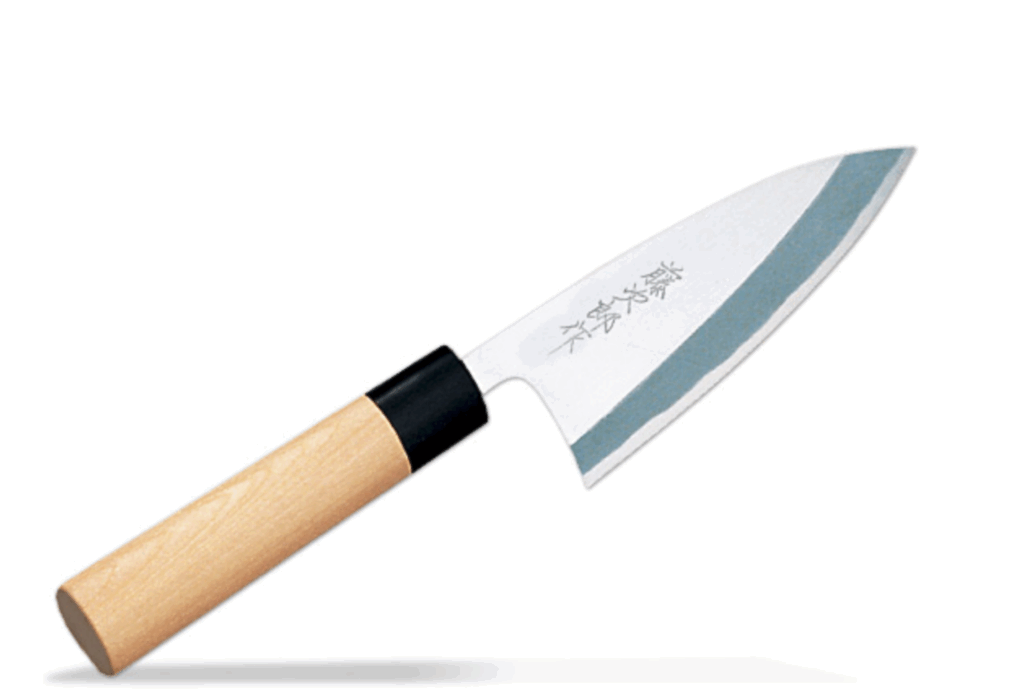
| Aspect & 5‑Point Rating | Notes & Key Points |
|---|---|
| Sharpness ★★★★★ | White #2 edge arrives razor‑keen; the compact ko‑deba format lets you feel precise bite on tasks like trimming aji scutes or filleting flatfish—“cuts like butter” and handles fine work like a tiny scalpel. |
| Edge Retention ★★★☆☆ | Typical White #2 longevity: the edge softens after multiple fish but lamination limits chipping. Quick touch‑ups restore bite; perfectly adequate for small‑fish prep sessions. |
| Rust Resistance ★☆☆☆☆ | Entire carbon‑steel blade (core + cladding) is highly reactive. Requires constant wipe‑dry discipline and post‑use oiling, especially around the handle junction, to prevent rust spots. |
| Maintenance ★★★☆☆ | Short, thin blade is beginner‑friendly on a whetstone and easy to wash/dry. Vigilant rust care is compulsory, but sharpening is fast and straightforward—so overall effort sits mid‑level. |
| Aesthetics ★★☆☆☆ | Utilitarian look: plain Magnolia handle, black plastic ferrule, basic kasumi finish. Functional rather than decorative—some find charm in its no‑frills workhorse vibe. |
| Price (USD) | 105mm :$105 |
Tojiro (藤次郎) is a major Japanese knife manufacturer based in the Tsubame-Sanjo region of Niigata, which is famed for metalwork. They’ve been around since the 1950s and have a reputation for delivering great value by blending traditional techniques with modern manufacturing.
The Tsubame-Sanjo area’s legacy in forging and polishing definitely is reflected in Tojiro’s knives – they are typically high quality and reliable, even in their lower-priced lines. Tojiro has a motto of merging tradition and innovation, and they produce everything from professional chef knives to household lines, earning trust worldwide.
This Tojiro Ko-Deba F-899 uses what they call “White steel” (白紙鋼) – likely White #2 or a very similar steel – which is heat-treated to be easy to sharpen and very sharp. The handle is ho wood which is water-resistant and comfortable to grip, making it suitable for handling small fish as intended. It’s essentially a no-nonsense small Deba that just works.
Chef’s perspective:
“In washoku kitchens, knife sharpness and stability are life-and-death matters for us. This little Deba has an excellent balance of the sharp White #2 edge and enough weight to make cutting fish heads smooth. The thick blade doesn’t waver even when hitting bones, which helps minimize damage to the flesh – a big advantage for us pros. And since the steel sharpens easily, I can keep it in top shape with regular touch-ups and use it for years. It truly feels like a knife that captures the essence of a wa-bocho, even in this small size.”
This Tojiro ko-deba is often the go-to recommendation for an entry-level small Deba that doesn’t compromise on functionality.
It’s perfect for someone who wants to get into prepping fish with authentic Japanese knives but isn’t ready to invest a lot, or for a professional who needs a reliable small knife that can take a beating. It’s cost-effective, yet by all accounts, very capable – hence its popularity and our inclusion on this list.
Kai Seki Magoroku Kinju Deba 105mm (Carbon Steel Wa-Deba)

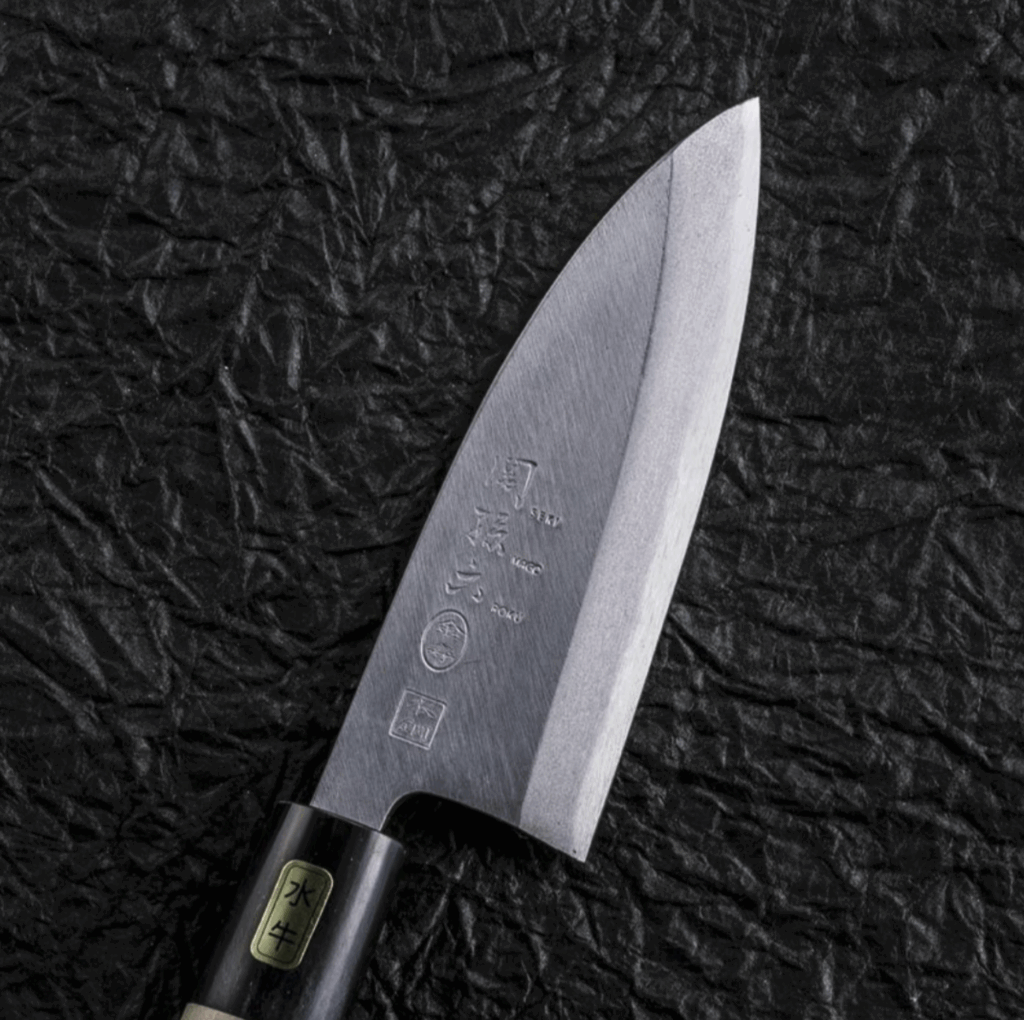
| Aspect & 5‑Point Rating | Notes & Key Points |
|---|---|
| Sharpness ★★★★★ | Kai’s Seki Magoroku “Kinju” ko‑deba (105 mm) is factory‑honed to a razor edge at an acute single‑bevel angle. It glides through small fish bones and flesh with pro‑level precision—reviews describe the cut as “refreshingly sharp” and beyond its price tier. |
| Edge Retention ★★★☆☆ | Optimized carbon steel core holds working sharpness for multiple fish sessions; dulls gradually rather than abruptly. Heat‑treatment balances hardness and toughness, so edge rolls or chips are rare. |
| Rust Resistance ★☆☆☆☆ | Traditional carbon‑steel blade with no stainless cladding—highly reactive. Immediate wash‑dry (and occasional oiling) is essential; otherwise rust spots will form quickly. |
| Maintenance ★★★☆☆ | Carbon steel is easy to resharpen; short blade makes stone work simple. Sturdy wood handle with buffalo‑horn ferrule resists loosening. Upkeep is straightforward if you’re accustomed to carbon‑steel care, but rust vigilance is non‑negotiable. |
| Aesthetics ★★★☆☆ | Classic kasumi finish, natural wood grain, and glossy horn ferrule give a dignified traditional look—refined yet understated (no damascus or mirror polish). |
| Price (USD) | 105 mm ≈ $154 (converted from ¥15,400 × 1.5 ÷ 150). |
Kai’s Seki Magoroku line is a famous series by Kai Corporation (the makers of Shun knives, among others) that originates from Seki City, Gifu – one of Japan’s major knife-making capitals.
The name Magoroku comes from a legendary swordsmith, and the line carries on that tradition by blending it with modern tech. The Kinju series (Kinju means “Gold longevity” perhaps, or just a series name) represents their high-quality carbon steel line. These knives integrate the tradition of Japanese forging with Kai’s production techniques, resulting in knives that are sharp, durable, and widely appreciated from home cooks to pros.
This Kinju Deba uses a carbon steel (exact type unspecified, but likely similar to White steel or a high carbon “hon-yaki” type steel Kai sourced) and it’s a very popular model in Japan for those wanting an authentic wa-knife experience without spending a fortune.
The series is known for high quality at a reasonable price, and many trust it as a no-nonsense workhorse that still has a bit of elegance to it.
The handle being natural wood (likely Japanese magnolia or similar) and having a genuine horn ferrule is notable – many knives in this price range might opt for plastic ferrules, but Kai went the extra step, which improves both aesthetics and durability. It shows in the overall feel – it’s a small knife that still feels like a “real” traditional knife, not a cheap version.
Chef’s perspective:
“For a professional dealing with many fish daily, consistent sharpness and easy maintenance are crucial. The Seki Magoroku Kinju Deba, using high-carbon steel, is sharpened so well that it’s easy to get the feel for resharpening when needed. It has a nice heft for such a small knife – when I tap through a hard bone, it doesn’t wobble, and I can transmit force accurately. The edge is tight and controlled, so even fine cuts turn out exactly as I want. It’s definitely a high-quality piece that meets professional demands.”
“In a washoku setting when filleting fish, a Deba’s sharpness and stability are non-negotiable. This little Deba cuts smoothly even through bone-in fish. The handle is very comfortable to grip, and I don’t get fatigued using it for long prep sessions. The tip catches bones without slipping, so I can get clean fillets with minimal flesh loss. It’s a knife I can use confidently even at work alongside my bigger knives.”
These testimonials (as imagined from context) highlight that the Kai Kinju Deba is trusted in professional environments. Even though it’s small, it delivers on the core needs: sharpness, stability, comfort. It’s essentially a “mini professional knife” – giving similar feel and performance as a larger high-end Deba, just scaled down.
In conclusion for the ko-deba section: both the Tojiro and the Kai Seki Magoroku are excellent small Deba options. The Tojiro is more budget-friendly and extremely functional, making it great for those starting out or on a tighter budget.
The Kai is a step up in fit and finish, and a bit pricier, appealing to those who want a more refined tool. Either way, having a ko-deba knife in your kit is incredibly useful if you frequently deal with small fish or want that precision. They complement a larger Deba perfectly – using the big Deba for heavy chops and large fish, and the ko-deba for fine work and smaller catches.
Conclusion
A Deba knife is an indispensable Japanese kitchen knife for filleting fish. Its heavy, single-beveled blade is designed to glide through fish flesh and cut through bones cleanly, making it a favorite among sushi chefs and fishmongers. When choosing a Deba (or a smaller ko-deba), it’s important to match the blade length to the fish you’ll be breaking down – the size of fish dictates how long a blade you need, and you may find you need multiple Deba knives if you regularly process a wide variety of fish sizes. For example, a 180mm Deba is ideal for medium-large fish, but you might want a 105mm ko-deba for very small fish or precision tasks.
Consider the blade material as well: carbon steels like White #2 and Blue #2 offer incredible sharpness and cutting feel, but require diligent maintenance to prevent rust. Stainless options like Ginsan steel provide easier care (no need to constantly worry about rust) while still delivering near-carbon performance. And then there are advanced steels like SG2 which push the envelope in both sharpness and wear resistance, albeit at a higher cost.
Ultimately, the best Japanese Deba knife for you will balance sharpness, durability, and maintenance in a way that fits your needs. Professionals might lean toward the supreme sharpness of carbon steel Deba (and accept the maintenance routine), whereas a busy chef who values convenience may opt for a Ginsan Deba to save time on upkeep without sacrificing much in performance.
All the Deba knives we’ve introduced – from the workhorse White steel models to the high-tech powder steel and the handy ko-deba – are excellent in their own right. Each could be that “one special knife” that lasts a lifetime with proper care. We hope this ranking and guide has helped illuminate what makes a Deba great and given you some solid options to consider. With the right Deba in hand, filleting fish becomes not only easier but truly enjoyable, as you wield a knife perfectly suited to the task.
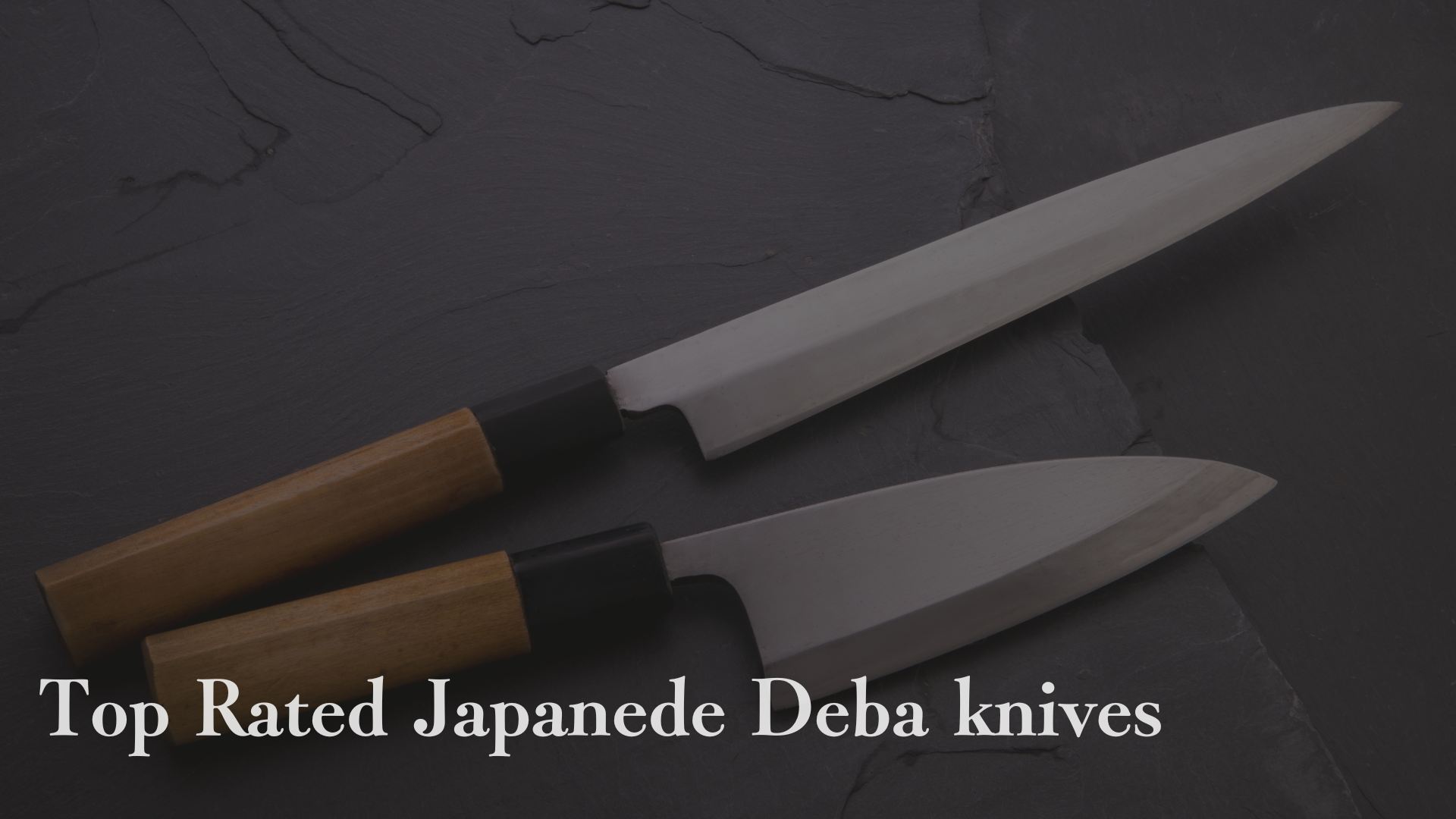
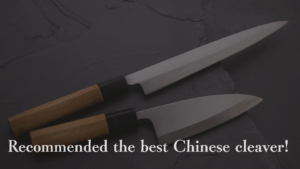
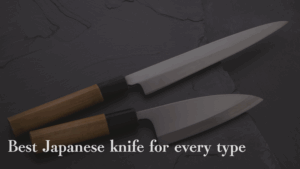
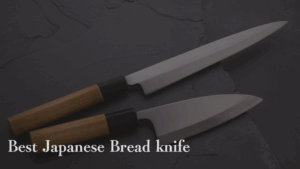
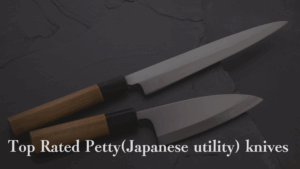
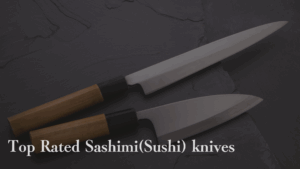
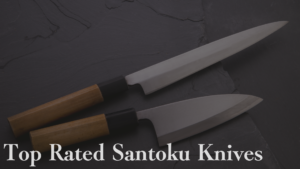
Comments